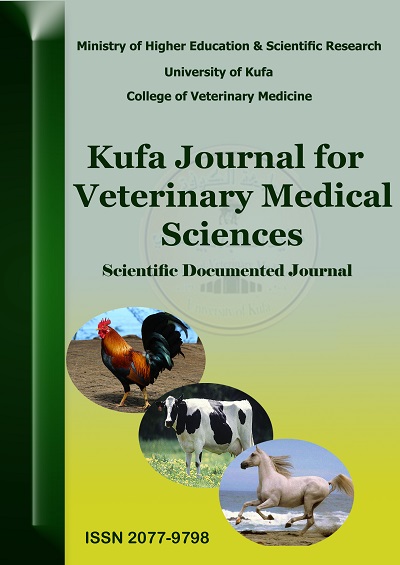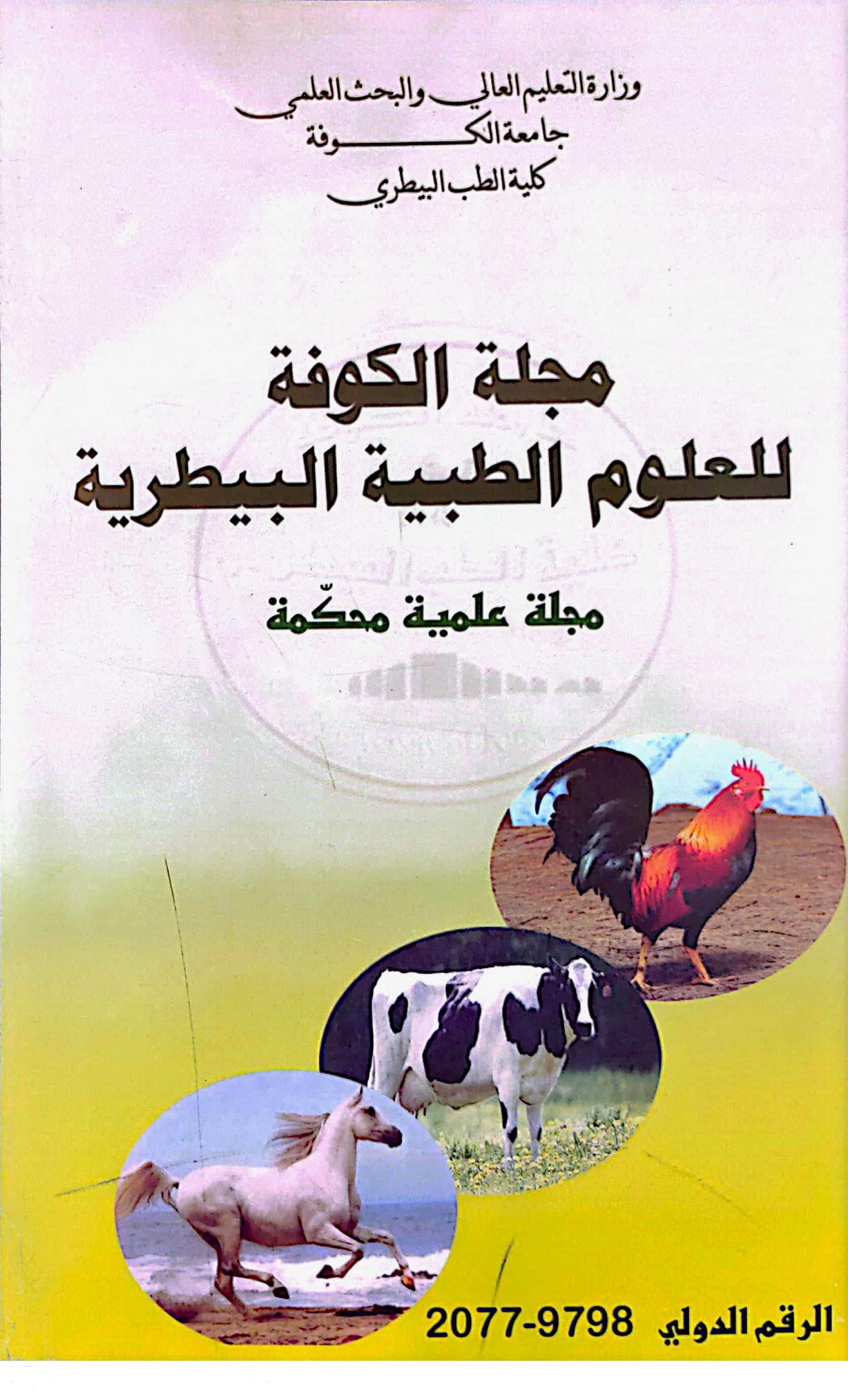Assessment of protective effect of thymus on cadmium chloride that induced nephropathy and neuropathy in rats
DOI:
https://doi.org/10.36326/kjvs/2010/v1i14223Keywords:
Basophilic nuclei, Brain, cadmium chloride, histological technique, thymusAbstract
This study included twenty seven rats were allowed to acclimate for 1 week in the animal house of veterinary medicine college. Rats were housed three per cage with dimension of (45*35*20). Rats were divided into three groups; the first group represent cadmium chloride (CaCl) treated group which include nine (9) animals denoted by (group A); second group represent thymus and cadmium chloride treated group which include nine animals (9) denoted by (B) and third group which represent control group which also include nine (9) animals denoted by (C). The CaCl was given by drinking water with dose rate (50 PPM) daily; the aqueous extraction of thymus also was given by drinking after adding of CaCl with dose rate (50 PPM) daily. Tissue samples were taken for histopathological study by killing (3) animals from each group at periods of (17, 24 and 31) days after exposure to CaCl. Routine histological technique ending by staining 5 μm with H&E and then examined by light microscope.
The histopathological results of group (A) revealed presence of pale area ( a” softening”) in the brain surrounding by edema. The tissue has vacuolated structure, also a number of astrocytes with small round basophilic nuclei and ill- defined cytoplasmic boundaries are present. Finding of hypertrophic reactive astrocytes and alterations of neurofibrils that clumped and twisted into odd shapes like tennis rackets or skeins of wool. The results of group (B) showed the protective effectiveness of Thymus extract against treatment with CACL and the brain tissue looks like normal regeneration occurs mainly at plaque margin and presence of normal white matter.
The histopathological results of kidneys of group (A) showed that the most prominent microscopic changes, in particular evident necrosis, especially in proximal tubules. There is atrophy of most of the tubules and the glomerular tuft shows marked increased in cellularity, with obliterated Bowman’s space . The most marked changes are the loss of tubules, and many of these remaining are small and lined by very atrophic epithelium. The results of Group (B) didn’t revealed any effectiveness of thymus extract against toxicity of kidney tissue with CACL.
The conclusion that the cadmium chloride may cause severe damage in brain and kidneys of rats and thymus can used as a protective agent against toxicity with cadmium chloride and this protective effect occur obviously in protection of brain tissue against toxic effect of cadmium chloride.
Downloads
Downloads
Published
How to Cite
Issue
Section
License
Copyright (c) 2023 Hassan Khalaf Ulaiwi, Ali Mohammed Ghazi, Diyaa Abed Auda

This work is licensed under a Creative Commons Attribution 4.0 International License.













